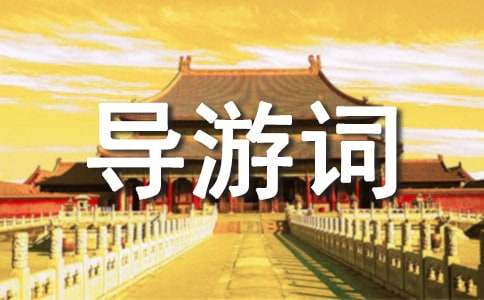- 宋慶齡故居英文導(dǎo)游詞 推薦度:
- 相關(guān)推薦
宋慶齡故居英文導(dǎo)游詞
The Former Residence of Soong Ching Ling, late Honorary Chairman of the People"s Republic of China, is situated at46North Rive Street in the Rear Lake area of the West City District. The residence was once a garden of one of the Qing Dynasty princes" mansions. The area along the banks of Rear Lake is quiet and beautiful, with shady willow trees lining the streets. Water from Rear Lake has been diverted through an underground channel into a stream that winds its way through the garden.

This lovely Beijing garden is elegantly laid out with rockeries and ponds set off by pines, cypresses and flowers. Winding corridors links traditional-style halls and pavilions in the garden. The tasteful layout gives the garden an atmosphere of elegant antiquity.
Originally, the grounds of the mansion contained numerous buildings: the front hall, called Happiness on the Hao River Bridge, after a story from Zhuang Zi; the Pavilion for Listening to the Orioles; and the eastern hall, called the Hall for Gazing at Flowers. Linked to the South Building by a winding corridor was the Waves of Kindness Pavilion. Exquisite large rockeries were dotted with structures such as the Fan Pavilion and the Room for Listening to the Rain. Ponds, fine rocks, shady trees, flowers and lawns all added to the enchantment of the garden. But over the years the whole garden fell into disrepair.
After the founding of New China in1949, the Party and government made plans to build a residence for Soong Ching Ling in Beijing, and decided to renovate one of the princes" gardens for the purpose. New buildings wee constructed to the west of the mansion"s main hall to create a quiet secluded courtyard as it stands today. Soong Ching Ling moved into the mansion in1963and worked, studied and lived here until she passed away on May29,1981.
A short way inside the main gate is a grape arbor, and by it in a flowerbed stands a wooden tablet carved with a brief introduction to the history of the mansion.
Walking northeast form the grape arbor, one comes to the exhibition halls. The auxiliary exhibition hall served as a guest room where Soong Ching Ling received guests from China.
The first exhibition hall is divided into eight sections, each representing a period of Soong Ching Ling"s life. The exhibits include large numbers of photographs, documents and objects of interest depicting her childhood and student days, her marriage to Sun Yat-sen, her participation in political activities, he organization of the Association to Safeguard the Rights of the Chinese People and her support of the advocates of resistance to the Japanese invasion. Also on display is a copy of one of Soong Ching Ling"s most famous saying, taken from her essay"Sun Yat-sen and His Cooperation with the Communist Party of China."
"Sun Yat-sen"s40 years of political struggle for the Chinese nation and people reached their peak in the last years of his life. The high point of his development came with his decision to cooperate with the Communist Party of China and work for the Chinese revolution."
The second exhibition hall is divided into seven sections with the following titles: Invitation to Come to the North; One of the Founders of New China; Close Comrade-in-Arms of the Party, Beloved Leader of the People; Pioneer in Safeguarding Peace-Envoy of the Chinese people; Study; Life and Work; Great Communist Fight; and the Grief of a Nation, the Sorrow of the World.
The third exhibition hall is the Children"s Hall, reflecting Soong Ching Ling"s great affection and concern for the youth of China. She once said: "Children are our future, our hope; they are our country"s most valuable asset." Included in the exhibition is a painting of a basket of longevity peaches, presented to Soong Ching Ling by the affection which the children of New China feel for her.
The fourth exhibition is a small two-story building. The ground floor contains a small drawing room and a dining room, while Soong Ching Ling"s study, office and living quarters are on the second floor. The bedroom, study and dining room are all arranged as they were when Soong Ching Ling lived there. The layout is simple and tasteful. Formerly, Soong Ching Ling would spend her time here playing the qin (Chinese zither), doing embroidery and writing poems and prose.
【宋慶齡故居英文導(dǎo)游詞】相關(guān)文章:
宋慶齡故居英文導(dǎo)游詞03-10
上海宋慶齡故居導(dǎo)游詞05-12
游宋慶齡故居作文10-09
《宋慶齡故居的樟樹(shù)》教案04-30
紹興魯迅故居英文導(dǎo)游詞04-27
北京宋慶齡同志故居資料06-01
22 宋慶齡故居的樟樹(shù) 教案04-25